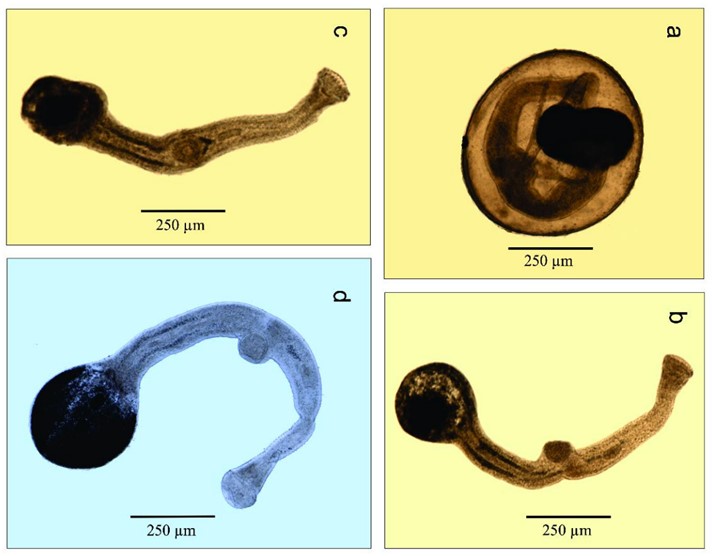Authors: J.G. García-Teh, D.I. Hernández-Mena, V.M. Vidal-Martínez y M.L. Aguirre-Macedo
https://doi.org/10.1017/S0022149X23000263
Abstract
A new species of the genus Stephanostomum is described for the southeastern Gulf of Mexico based on morphological and nucleotide evidence. Stephanostomum minankisi n. sp. infects the intestine of the dusky flounder Syacium papillosum in the Yucatan Continental Shelf, Mexico (Yucatan Peninsula). Sequences of the 28S ribosomal gene were obtained and compared with available sequences of the other species and genera of the families Acanthocolpidae and Brachycladiidae from GenBank. A phylogenetic analysis was conducted, including 39 sequences, 26 of which represented 21 species and six genera of the family Acanthocolpidae. The new species is characterized by the absence of circumoral spines and spines on the tegument. Nonetheless, scanning electron microscopy consistently revealed the pits of 52 circumoral spines distributed in a double row with 26 spines each, and forebody spined. Other distinctive features of this species are testes in contact (sometimes overlapping), the vitellaria running along the body lateral fields to the mid-level of the cirrus-sac, pars prostatica and ejaculatory duct similar in length, and uroproct present. The phylogenetic tree showed that the three species found as parasites of dusky flounder (the new adult species and two in metacercaria stages) were grouped into two different clades. S. minankisi n. sp. was the sister species of Stephanostomum sp. 1 (Bt = 56) and formed a clade with S. tantabiddii, supported by high bootstrap values (100).
Keywords: Stephanostomum, flatfishes, integrative taxonomy, Yucatan Peninsula, phylogeny


Recent Comments